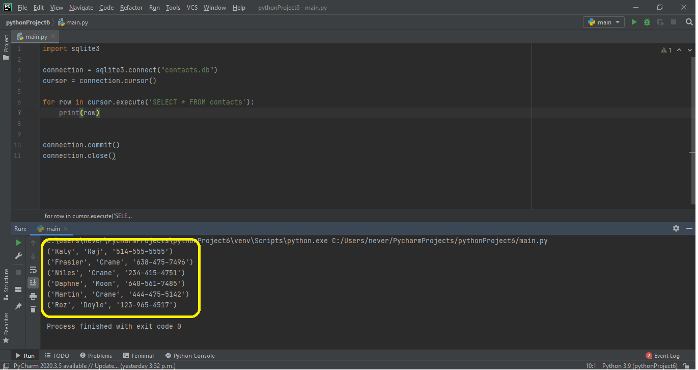
If we create the connection inside the function, that means that every time we call the function we're creating a new connection. Particularly in this application that is single threaded (if you don't know what that is, don't worry), creating the connection inside the function has no benefits. Since we should only ever have one connection open (for writing to the database, at least), it can be simpler to create the connection object at the top of the file instead of inside the function.
#CONNECTING TO SQLITE DATABASE PYTHON CODE#
The best way to create a Sqlite database in Python: import the sqlite3 module use the nnect('databasename.db') funciton Follwoing is the Python code that create a. sqlite3 module is a python built-in module which have a lot of method for working with SQLite databases.

If we forget to close connections we won't be able to open other ones and insert data, for example. The sqlite3 that we will be using throughout this tutorial is part of the Python Standard Library and is a nice and easy interface to SQLite databases: There are no server processes involved, no configurations required, and no other obstacles we have to worry about. To create a Sqlite database in Python use the sqlite3 module. The cursor is then ready to perform all kinds of operations with.

While the connection is open, any interactions with the database require you to make a cursor object with the. In SQLite we should only ever have one connection open, as only one open connection can modify the database at a time. A connection object is created using nnect() the connection must be closed at the end of the session with the.

In this function we're doing a few things: execute ( "CREATE TABLE entries (content TEXT, date TEXT) " )


 0 kommentar(er)
0 kommentar(er)
